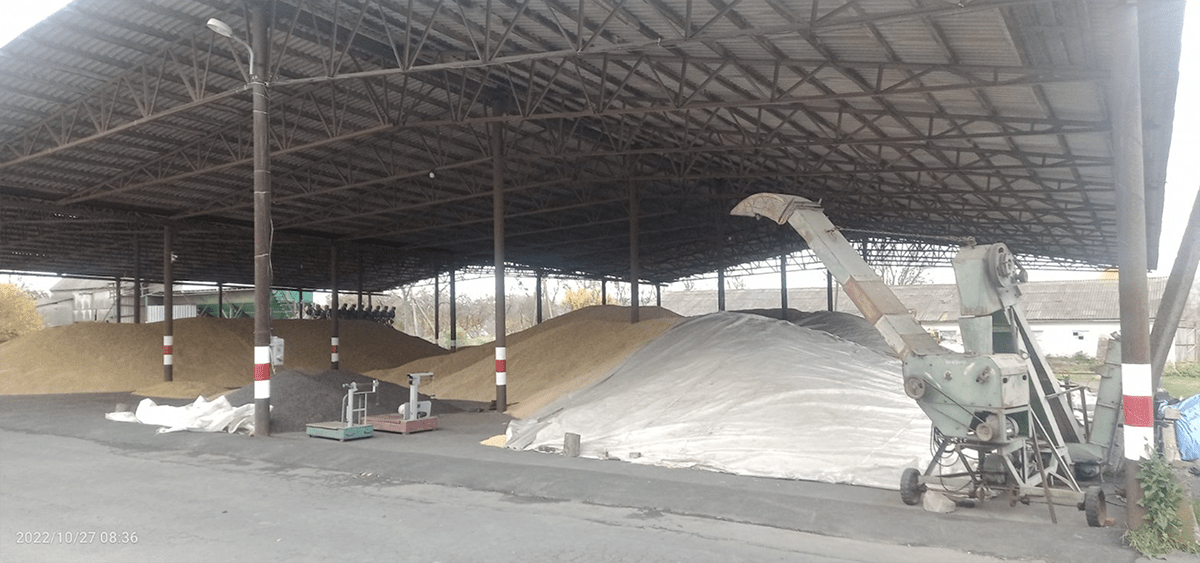The invasion of Ukraine is devastating for the country, its farmers, and also the Russian farmers in a boomerang effect. Last year, none of them benefited from the record global prices of cereals and oilseeds.
Despite the war, the Ukrainian economy has not ceased to function, if only to finance the conflict it is facing. During a government meeting, Ukrainian Prime Minister Denys Shmyhal stated that Ukrainian farmers had already sown over 10 million hectares out of the planned 13 million. “On May 19th, Ukrainian farmers had already sown over 4.693 million hectares of spring cereals and legumes in the government-controlled areas,” reports Ukragoconsult. This fully satisfies the domestic demand of our market and leaves significant room for exports and, consequently, supports the economy.”
Denys Shmyhal also emphasized, “The demining work, identified as one of the main priorities for this year, is also ongoing.” So far, 110,000 hectares have been inspected, and over 600,000 explosive devices have been discovered. However, approximately 470,000 hectares of agricultural land in the regions of Dnipropetrovsk, Zaporizhzhia, Kiev, Mykolaiv, Sumy, Kharkiv, Kherson, Chernihiv, and Cherkasy still need to be inspected.
Since last autumn, Ukrainian farmers had resigned themselves to the fact that their 2023 crops would be low, given the ability to cultivate the land. “Usually, Ukrainian farmers plan the planting areas and spring field work in autumn, but this year, the decision will have to be made just before planting,” explained Sergey Feofilov, CEO of UkrAgroConsult, during the webinar “Facilitating the reintegration of the Black Sea region into the global grain market” organized by the International Grains Council (IGC).
At the head of a 4,500-hectare farm in Buky, Ukraine (40 km from Uman), Yvan Melnyk and Oleksandr Pidlubny sowed 1,200 hectares of wheat and planted 1,100 hectares of rapeseed in mid-October. In previous years, only 800 hectares of wheat were cultivated, and the total area for rapeseed, peas, and soybeans covered 1,300 hectares. But in the current context, wheat and rapeseed are the two easiest crops to plant. For the remaining 2,200 hectares, the crop rotation was determined based on the availability of inputs, their prices, and the means available to finance the cultivation. A lot of sunflowers were planted.
The Ukrainian grain market has collapsed since the start of the war. Selling prices do not cover production and drying costs, farm rents, and the salaries of the 130 employees. Therefore, wheat cultivation was no longer profitable, and cereal and oilseed stocks were piling up.
Quickly, the viability of Yvan Melnyk and Oleksandr Pidlubny’s farm depended on their country’s ability to export the cereals and oilseeds produced in 2021 and 2022, which was essential to relieve the domestic market and hope for an increase in agricultural prices.
The opening of the maritime corridor on the Black Sea in July did not allow Ukraine to regain the pre-conflict export capacity offered by the Odessa region in terms of volume, mobility, and loading speed.
However, more than 20 million metric tons of grains have been shipped since July 2022.
Most importantly, the corridor quickly reduced the risk posed by the Russo-Ukrainian conflict. Cereal prices began to decline last autumn. The market presence of abundant Australian and Brazilian crops during the autumn and winter of 2022 provided opportunities for importing countries to source their supplies. This contributed to a decrease in prices. Furthermore, the corridor became just as indispensable for Russia and Turkey as it was for Ukraine. In November 2022 and then in February 2023, Russia had no choice but to accept its continuation.
For many months, “persistent financial and logistical constraints have limited Russian shipments below their export potential,” notes the IGC. According to Sovecon.ru, Russian wheat operators have suffered from the distrust of importing countries towards them and the difficulty of chartering ships, ensuring goods, and making payments.
In the Russian domestic market, the end of the corridor would have worsened the economic difficulties of farmers who were already facing collapsing agricultural prices due to insufficient export outlets. During the first three months of the 2022-2023 season, only 10.4 million metric tons of Russian wheat had been sold to third countries, a 22.4% decrease compared to 2021-2022, despite a low harvest. Export taxes and logistics costs had reduced farm-gate selling prices while input prices were soaring.
Photo : Yvan Melnyk et Oleksandr Pidlubny




